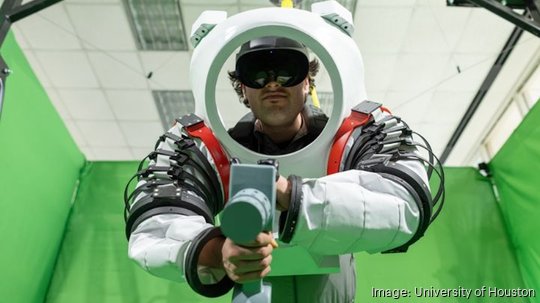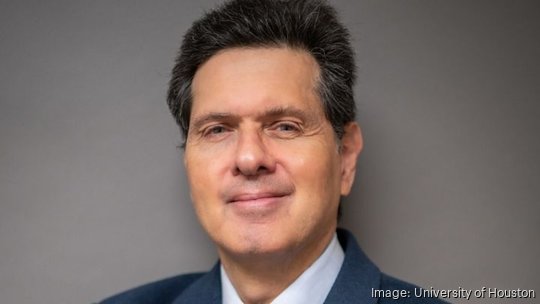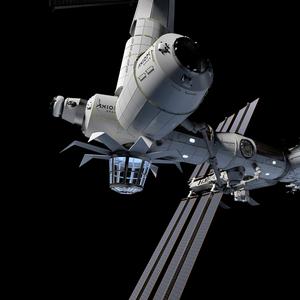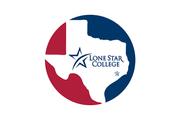
As Houston continues to pour funding into a sustainable space economy, the University of Houston is expanding its research and education programs to keep pace.
The details are still in the works, but the university will launch a new undergraduate aerospace program to accompany its existing graduate programs, including its unique space architecture program. And there are plans to boost startup incubation at UH, paralleling efforts and previous investment that the university has made in its energy transition department.
The new programs will come alongside a new NASA center that UH won a grant for in May. UH will partner with Texas A&M University, Houston Community College and San Jacinto College, and industry partners will include Houston-based Axiom Space and Virginia-based The Boeing Co. (NYSE: BA).
Karolos Grigoriadis, the Moores professor of mechanical engineering and director of the aerospace engineering graduate program at UH, will lead the NASA MIRO Inflatable Deployable Environments and Adaptive Space Systems Center, or IDEAS2 Center. Grigoriadis told the Houston Business Journal in an interview that the timing for the university’s expansion of space research and education programs came as both NASA and the private sector are increasingly focused on low-Earth orbit and a pathway to Mars.
“Space is becoming an important issue at the state and nationwide level, with both the private sector and NASA involved,” Grigoriadis said. “Artemis, Gateway, moon-to-Mars projects. Certainly, I think this was the right time to put this expansion effort in place.”

Grigoriadis said that UH plans to begin hiring faculty with aerospace specializations during the 2024-2025 academic year before seeking accreditation from the Academic Board of Engineering and Technology. The hope is to have the undergraduate program in place in around two years.
A potential space startup incubator would fall in line with broader plans from UH's Office of Technology Transfer and Innovation to focus on research output in the lens of commercialized projects. UH named Haleh Ardebili and Michael Harold as leaders this year to begin the process of turning more university research into patented ideas.
UH’s efforts are also coming after Texas Gov. Greg Abbott laid down a challenge in March for universities to boost their output of the next generation of aerospace workers.
In addition to UH, Rice University and Texas A&M currently offer master’s programs in space studies and space engineering, specifically. Meanwhile, San Jacinto College offers aerospace technician training through its Edge Center, which is located near the Houston Spaceport.
Building a home for lunar homes
The IDEAS2 Center is backed by a grant from NASA worth nearly $5 million. Grigoriadis outlined several milestones the university and partner institutions are working to reach over the five-year grant period.
“The main focus is on space infrastructure in expandable, modular structures that we need to be able to sustain humans on the moon and Mars,” Grigoriadis said. “We have a plan of test beds that will be put in place starting this coming year, and we will conduct experiments on the design, computation, fault tolerance, health monitoring for these types of structures. At the same time, training students is part of this effort as well.”
The center's inflatable structures will use pressurized air to maintain shape and rigidity while being cheap to transport into space. NASA has used inflatable structures in applications such as satellites and heat shields since the 1950s, but the technology is also being studied for use as a habitat for humans in space.
In July, the agency released a ranking of over 200 areas where technology development was needed, based on input from both NASA researchers, space centers and industry. "Surviving and operating through the lunar night" was ranked within the top five most important technical challenges by nearly every group.
Additional research being conducted at the center will also include virtual simulations for spacewalks. Dimitri Lagoudas, a professor of aerospace engineering at Texas A&M, and Olga Bannova, UH’s research professor of mechanical engineering and director of the university’s space architecture graduate program, will serve as associate directors of the IDEAS2 Center.
How companies can contribute to aerospace talent pipeline
The new center is not just focused on new technology, however. One of the primary focuses for UH and other local universities is continuing to pump out a new generation of aerospace talent for the private companies that want to take advantage of the Bayou City’s talent pool.
Some local leaders have noted a talent gap between experienced professionals and new workers in the industry. Grigoriadis said that while internships for future aerospace professionals are helpful in bridging that gap, they can be expanded to emphasize the hands-on knowledge needed.
“Students who are involved in internships graduate with the technical skills, the engineering knowledge,” Grigoriadis said. “But participating in internships lets you see how the industry works, how projects are directed. And it makes them wonderful potential employees because they graduate with not just technical knowledge but also knowledge of how the company operates.”
Today, the Lone Star State is home to over 150,000 of the country’s 1.3 million space employees, according to the nonprofit Texas 2036. The Greater Houston Partnership estimated that the Houston area has approximately 23,000 aerospace- and aviation-related professionals.
Abbott’s challenge to Texas universities accompanied his announcements of the first members of two new state panels that are intended to boost the Lone Star State’s aerospace output: the Texas Space Commission and the Texas Aerospace Research and Space Economy Consortium. University leaders named on the TARSEC panel include David Alexander, director of the Rice Space Institute at Rice University; Nancy Currie-Gregg, director of the Texas A&M Space Institute; and Robert Ambrose, assistant director of the Texas A&M University Space Institute and former JSC division chief.
Sign up here for the Houston Business Journal’s free morning and afternoon daily newsletters to receive the latest business news impacting greater Houston.





